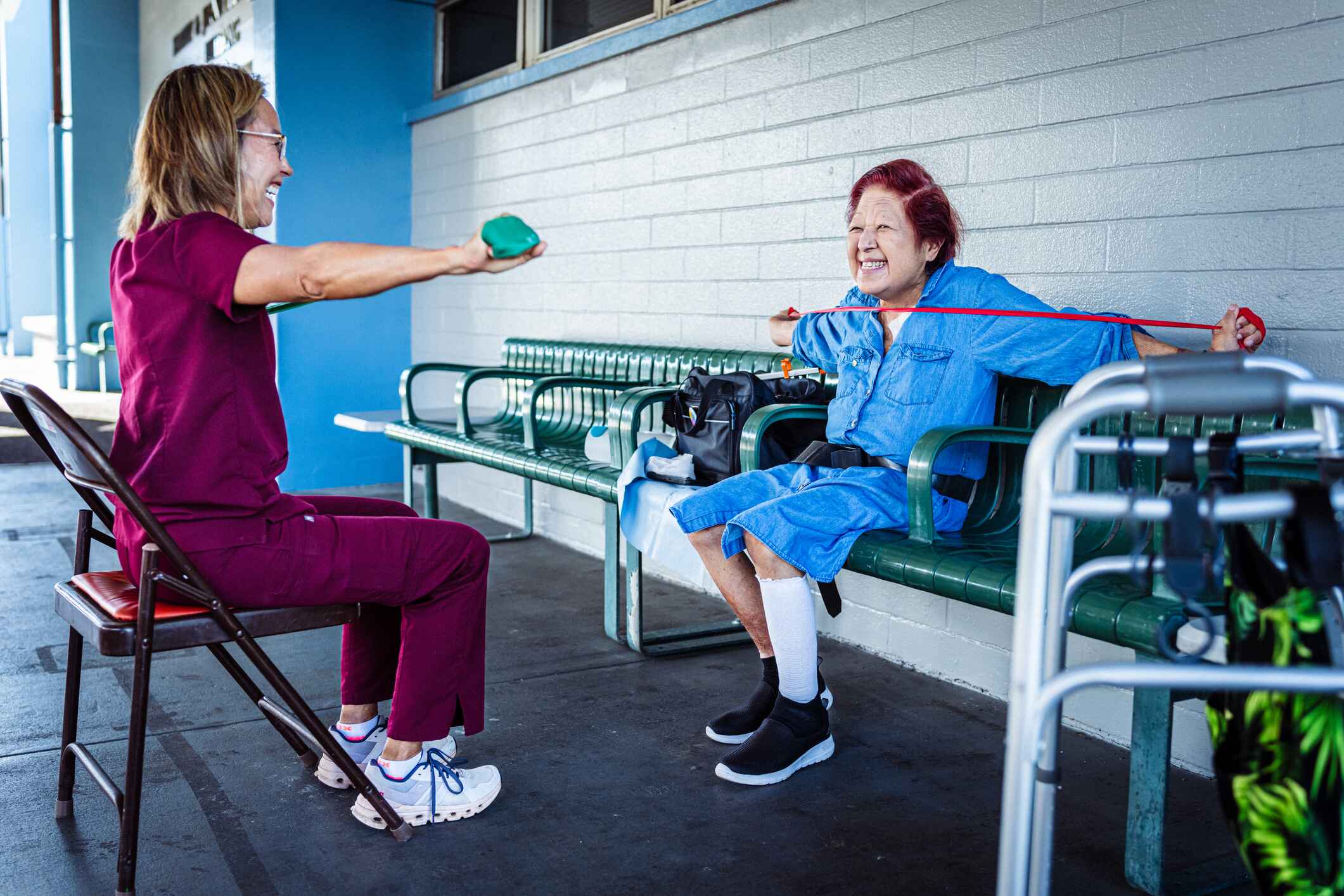
Managing Pain and Rehabilitation Across Different Patient Populations
When you're a travel physical therapist (PT), no two days—or patients—are the same. You might be working with an older adult learning to walk again after surgery one week and an athlete rehabilitating from a torn ligament the next. Add in the unique dynamics of travel physical therapy—like adapting to new clinics, working with unfamiliar teams, and navigating varying patient demographics—and the job takes on an exciting but complex challenge.
This article dives into managing pain and rehabilitation across key patient populations you’ll encounter as a travel physical therapist. From those suffering from chronic pain to post-surgical patients and individuals with neurological disorders, you'll learn strategies to deliver effective care while maintaining flexibility in a travel setting.
The Importance of Pain Management in Physical Therapy
Pain isn’t just a symptom—it’s a barrier. Whether stemming from chronic conditions, recovery from surgery, or a neurological condition, pain directly impacts a patient's mobility, independence, and quality of life. Travel physical therapists play a pivotal role in helping patients manage pain, rebuild strength, and regain functionality.
The Travel PT Advantage in Pain Management
The beauty of travel PT lies in its variety. Exposure to patients in different settings—urban hospitals, rural outpatient clinics, or even in-home care—broadens your experience and sharpens your adaptability.
However, with the perks come challenges. Transitioning between facilities means learning to effectively manage physical therapy pain management in diverse patient populations, all while adjusting to new team dynamics and resources.
To thrive in this environment, it's crucial to stay flexible, apply evidence-based practices, and communicate proactively with patients and providers.
Chronic Pain and Physical Therapy
Addressing Chronic Pain Across Populations
Patients with chronic pain—whether from arthritis, fibromyalgia, or back injuries—are often navigating years, if not decades, of discomfort. For many, physical therapy feels like their last hope for relief. Your role as a travel PT is not only to guide them toward better movement but to do so with empathy and persistence.
Treatment Strategies for Chronic Pain
- Focus on Education
Teach patients about pain mechanics, such as the difference between acute and chronic pain. This demystifies their experience and gives them a sense of control.
- Gentle Progression
Start with low-intensity exercises and build up gradually. Stretching, aquatics, and mindfulness techniques like yoga are excellent low-impact options.
- Utilize Modalities
Use complementary techniques like heat, cold therapy, or TENS (transcutaneous electrical nerve stimulation) for additional relief.
- Promote Consistency
Chronic pain patients often feel disheartened. Show them how small, consistent efforts lead to meaningful improvements over time.
Flexibility in a Travel Setting
Travel PTs often face the challenge of continuity of care. Be diligent about documenting patient progress and ensuring the next therapist or care provider has the tools to continue their treatment effectively.
Post-Surgical Rehabilitation
The Road to Recovery for Post-Surgical Patients
Post-surgical rehabilitation offers some of the most rewarding work in physical therapy. Whether it’s helping a patient recover from joint replacement surgery or regain mobility after back surgery, you’ll be part of a life-changing process.
Treatment Plans for Post-Surgical Needs
- Early Movement Is Key
Encourage mobility as soon as it's safe. Whether it’s gentle walking or passive range-of-motion exercises, early movement reduces the likelihood of complications like blood clots.
- Strength Rebuilding
Include exercises that gradually strengthen weakened muscles without overloading them.
- Monitor Progress Closely
Patients recovering from surgery may experience flare-ups or setbacks. Stay adaptable, modifying intensity and frequency as necessary.
Adapting to New Clinics and Facilities
Every facility may have varying equipment or protocols. Adapt your treatment plans to what’s available, ensuring you align with the local team’s expectations.
Neurological Disorders and Physical Therapy
Tackling Neurological Challenges in PT
Patients with neurological conditions—such as stroke recovery, Parkinson’s disease, or multiple sclerosis—require specialized care that addresses both motor and cognitive functions. These patients often require extra patience and encouragement, making your role as their PT both challenging and fulfilling.
Best Practices for Neurological Rehabilitation
- Prioritize Safety
These patients are often at high risk for falls. Your treatments should focus on improving balance and coordination in secure environments.
- Task-Specific Training
Use exercises that mimic everyday activities to help patients regain independence (e.g., placing dishes in a cabinet).
- Neuroplasticity Principles
Frequent repetition of movement patterns aids in rewiring the brain to regain motor skills.
- Holistic Care
Keep family members and caregivers involved to ensure patients receive ongoing support outside of therapy sessions.
Navigating New Patient Demographics as a Travel PT
If you're working in a region with a high older adult population, you'll likely treat many neurological patients. Familiarize yourself with culturally responsive care, as this group may have unique needs based on their background.
Adjusting Treatment Plans on the Fly as a Travel PT
Being a travel PT means embarking on new assignments every few months. Flexibility and adaptability are essential, especially when managing pain and rehabilitation. Here are strategies to help:
- Conduct Thorough Initial Assessments
Since you may only have a short time with patients, an effective assessment can set the trajectory for their recovery. Observe gait, facial expressions, or movement abnormalities as soon as the patient begins interacting with you.
- Leverage Resources Around You
Collaborate with other healthcare providers and support staff to provide holistic care. Building relationships with the facility’s team will improve patient outcomes.
- Stay Up to Date
Keep refreshing your skills with continuing education or certifications specific to chronic pain or neurological rehab.
- Communicate Clearly
Whether with the patient or their caregiver, effective communication ensures they understand their progress and ongoing goals.

Why Travel PTs Are Vital for Pain Management Success
Travel physical therapists bring unique advantages to pain management across patient populations. With their adaptability, wide-ranging experience, and ability to step into new environments quickly, travel PTs can make a significant impact in helping patients, no matter their condition.
Your Contribution as a Travel PT
Managing pain and rehabilitation in a travel setting is both an art and a science. By integrating evidence-based practices with a compassionate, flexible approach, you’ll unlock the potential for extraordinary patient outcomes across diverse populations—whether they’re managing chronic pain, recovering from surgery, or navigating the challenges of a neurological condition.
Looking to expand your career as a travel PT? Explore opportunities with AMN Healthcare and discover the impact you can have while traveling. Start your next adventure today!
Latest News
How Travel OTs Can Stay Up to Date with Industry Trends
Discover how travel OTs can stay updated with industry trends, grow professionally, and find the best paying OT jobs. Strategies for success in 600 words.
Top Challenges Travel SLPs Face and How to Overcome Them
Discover the top challenges travel SLPs face and how to overcome them. From documentation to patient engagement, take control of your SLP career today!
How to Nail Your First Patient Visit: Travel PT Edition
Effective tips for travel physical therapists on their first patient visit. Learn about preparation, assessments, and top travel therapy companies for PT jobs.
How to Ensure a Smooth Handoff in Temporary Assignments for OTs
Learn how travel OTs ensure continuity of care during temporary assignments, with best practices to support patients and prepare for the next opportunity.
Managing Pain and Rehabilitation Across Different Patient Populations
Learn how travel PTs manage chronic pain, rehab post-surgery, and address neurological conditions—all while adapting to new settings.
Navigating Therapist Shortages: How Travel Therapists Can Fill Gaps and Lead Change
Learn how travel therapists are tackling the therapist shortage, filling critical gaps in care, and leading change. Start your impactful travel career now!
Telehealth for Occupational Therapists in 2025: How to Provide Effective Remote Therapy
Discover how to excel in OT teletherapy. Learn strategies for client engagement, tech tools, and adapting occupational therapy to remote settings effectively.










